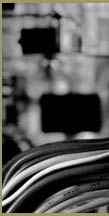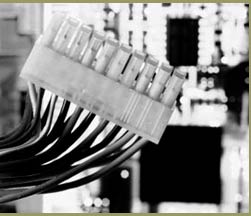
Each day, thousands of people come to UW-Madison to formulate new ideas that may eventually shape the world. But a smaller, behind-the-scenes group of several hundred arrives each day thinking about ways to build state-of-the-art labs, classrooms, and computer networks to support the innovation of the wider university. Their vision is revolutionary—changing not only the physical configuration of campus, but also presenting a bold new blueprint for the ways research, learning, and student life may change during the next few decades. In terms of bricks and mortar, much of the west part of the campus will be transformed during the next decade into an interconnected "academic village" for the health sciences, designed to speed the application of research from the lab to the bedside. Like never before, technology will be woven into "smart" buildings. Over the longer term, change will also come to the east and central areas of campus, improving the quality of student housing, updating the venerable Memorial Union, and, eventually, creating a new green-space corridor running south from campus to Regent Street. During the process, special emphasis will be placed on creating new performance and classroom spaces for the arts and humanities, with the thought that strength in those areas will help attract some of the most creative students and faculty in the world. Technologically, members of the campus community will use a new campus network, expanded wireless capabilities, and more powerful laptops and handheld devices to communicate with each other, along with powerful teaching and learning resources. Like most plans, this vision for the future is fluid and stretches over several decades. Budget constraints and a lack of expansion space complicate its execution. However, a central belief remains constant: To attract and support the best scholars and researchers, the university must continue to adapt and evolve. |
 |
|||
|
Just over a decade ago, the campus began to embrace
e-mail communication. Today, e-mail—and the vast resources of the
Internet—are fully integrated into nearly every corner of the university.
Now comes another leap forward. A major upgrade of campus data and video
networks, called the 21st Century Network, may have a similar impact on
research, teaching, and learning. With the new network backbone already
in place, UW researchers are moving data 10 times faster than before,
with more reliability and security, and with room to grow. They are now
able to share large amounts of data with colleagues across campus and
around the world. Within a few years, the network will have wider applications.
Professors will be able to provide video clips, materials from image databases,
and interactive simulations to their students. In turn, students will
have access to the material at any time, anywhere on campus. Annie Stunden,
chief information officer for the Division of Information Technology predicts
the network will shape new ways to communicate, just as e-mail did: "I
expect teachers will do less lecturing and more mentoring in support of
their students, as they explore, test, and try on their own." |
||||
| Home
| Chancellor’s Message Learning | Research | Community | Partnerships | Campus Year In Review | Facts & Figures |
||
| Chancellor's Page | UW Home | ||
File last updated: December 19, 2003 Feedback, questions or accessibility issues. Copyright © 2003 The Board of Regents of the University of Wisconsin System. |
||